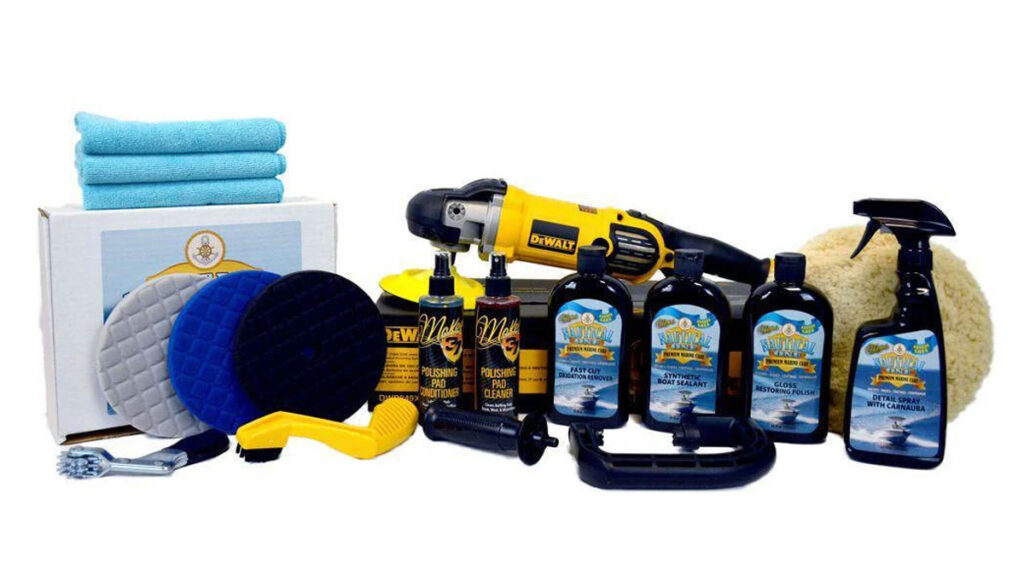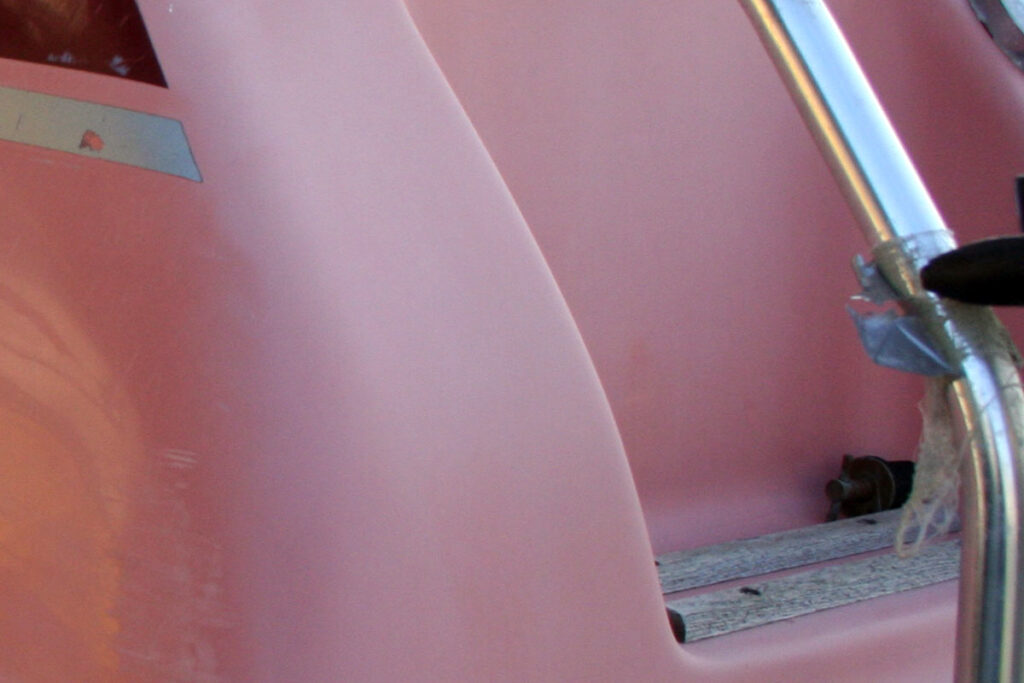
To a boat owner, few things are as attractive as the look of a shiny gelcoat. And few things are as depressing as the look of old, faded, chalky gelcoat. Fortunately, just about any vessel’s faded gelcoat can be made to look like new again. It will take some elbow grease and some time, but the process isn’t complicated.
Removing Oxidation from Gelcoat
The biggest job in restoring a boat’s gelcoat is removing the oxidation. Oxidation is the molecular breakdown of the exterior surface of the gelcoat. This natural process occurs as UV radiation and oxygen cause it to deteriorate, creating a white powdery substance that embeds itself in the gelcoat’s pores. As this happens, the gelcoat’s super-slick surface becomes rough and cracked at a microscopic level, so it no longer reflects light as it did when it was new. Contaminants like salt water, bird droppings and chemicals can speed up the process, and a boat can take on a dull, chalky appearance in just a few years if left unprotected and exposed to the elements.

To get rid of that oxidation, start with a thorough cleaning. Give the boat a full-blown, scrub-down from stem to stern with boat soap and a scrub brush. Next, you’ll need an oxidation remover, an orbital polisher or rotary buffer, and plenty of bonnets. Note: unless you’re dealing with a very small boat, or a limited patch of gelcoat, don’t try removing the oxidation by hand. Lots and lots of rubbing is necessary, and hand-buffing it away isn’t realistic most of the time.
There are tons of oxidation removers on the market, ranging from heavy to light. Which will best suit your needs depends on the boat’s level of oxidation. In severe cases, go with a heavy compound; these generally contain abrasives that break down as you use them, providing finer and finer grit. After completing the treatment with a heavy oxidation remover, however, it will probably be necessary to go back with a lighter compound or polish to bring back that deep shine. In many cases, you can find oxidation removers sold in kit form with both compound levels included. In the case of minor oxidation, you can generally skip the heavy stuff and go directly to a light compound or polishing compound. If you’re not sure which is appropriate, start light and apply it to a test area to see if you’re satisfied with the results.
Before you begin removing the oxidation, be sure to tape off through-hull fittings, cleats and other hardware, trim or similar items that could get scuffed up. On most boats, you’ll also need to keep a rag handy and use it to rub tight areas around those fittings and/or up under the rub rail, where the buffer can’t effectively reach.

Completing the Restoration
Removing all of the oxidation is the first half of the job. Next, you’ll need to seal up the pores of the now-exposed gelcoat, or oxidation will return rapidly. This process begins with another thorough washdown to make sure all of the oxidation-remover compound is rinsed away. Then you’ll need to give the gelcoat a wax job. But not with any old wax. Liquid waxes may be easy to apply and result in an excellent shine, but they aren’t nearly as long-lasting, nor as protective, as a layer of thick paste wax by hand. It requires a lot more elbow grease, but giving the gelcoat the maximum level of protection at this stage is critical, so go with the paste. And when you’re finished, start all over again. Two complete, thorough coats are necessary to be confident you’ve sealed up that gelcoat.

Preventing Future Oxidation
Now that your boat looks great again, you want to keep it looking that way. This requires some basic maintenance, starting with giving the boat a thorough washdown every time it’s used, especially in saltwater, and washing it off weekly if it sits unused. It also requires rejuvenating that wax from time to time. It’s fine to use a liquid wax moving forward, just as long as it’s reapplied every few weeks. If you continue to use a paste wax, depending on the climate and how exposed to sun and weather the boat is when stored, you may get a full month to several months of protection out of it.









